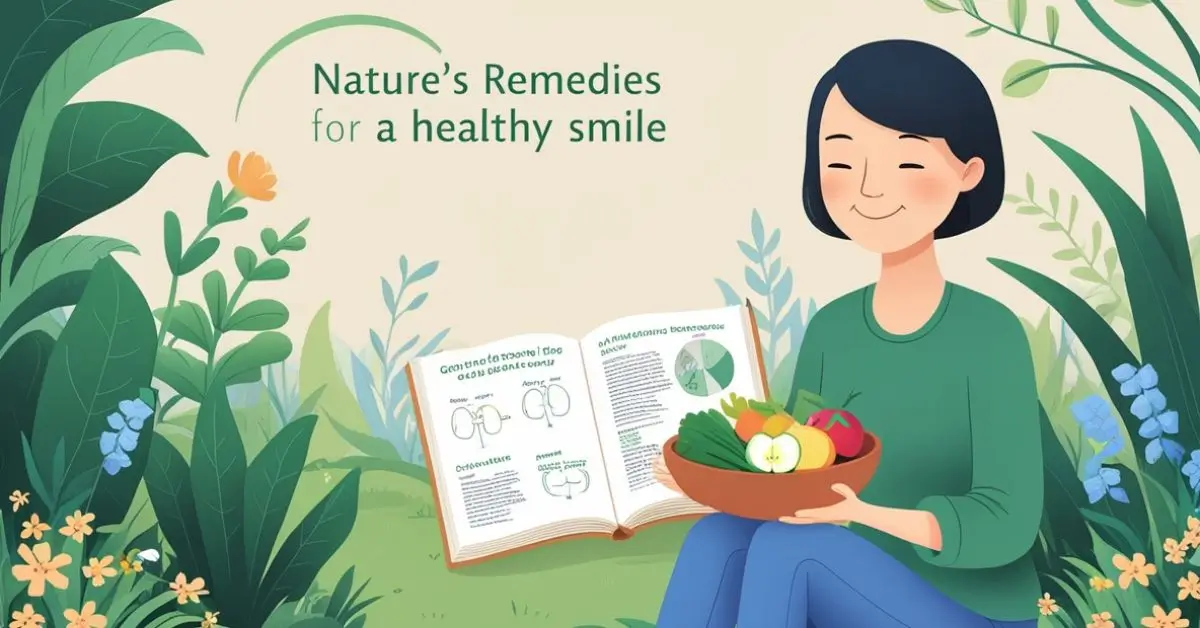News
Bee Safe: How a Honey Bee Suit Protects You During Beekeeping
Published
3 months agoon

Beekeeping is a fulfilling and fascinating hobby, offering the chance to work with one of nature’s most important species—the honeybee. These tiny creatures play a vital role in pollinating the plants that grow our food, and keeping them healthy ensures the well-being of ecosystems around the world. However, working with bees can also be risky, especially when they feel threatened. For beekeepers, whether beginners or seasoned professionals, safety is paramount. That’s where the honey bee suit comes in.
A honey bee suit is more than just a piece of clothing—it’s essential gear that offers protection from stings and allows you to work comfortably with your bees. In this article, we’ll take an in-depth look at how a honey bee suit protects you during beekeeping, the different components of a suit, and why it’s such a crucial part of a beekeeper’s toolkit.
Why Do You Need a Honey Bee Suit?
The Threat of Bee Stings
At the core of why a honey bee suit is so important lies the risk of bee stings. Honey bees, while generally non-aggressive, will sting in defense of their hive. When a bee feels threatened or believes the hive is under attack, it releases a pheromone that signals other bees to defend the colony. One sting can quickly escalate into dozens or even hundreds if the pheromone triggers a larger response.
For many people, a bee sting results in a painful welt that subsides after a few hours or days. However, for individuals with bee sting allergies, a sting can provoke a dangerous reaction called anaphylaxis, which can be life-threatening without immediate medical attention. For these individuals, proper protective gear is not just a recommendation—it’s a must.
Minimizing Discomfort and Increasing Confidence
Even if you’re not allergic to bee stings, the discomfort they cause is enough reason to wear protective clothing. Beekeepers who don’t feel protected may become nervous or anxious when working with bees, increasing the likelihood of making mistakes that could agitate the hive. A good-quality bee suit not only protects the skin but also provides peace of mind, allowing beekeepers to focus on their tasks without constant worry of being stung. A calm beekeeper is less likely to disturb the bees, making for a safer and more enjoyable experience.
How a Honey Bee Suit Protects You: The Components
A honey bee suit is a head-to-toe protective ensemble designed to shield your skin from bee stings. While its primary function is to create a barrier between you and the bees, modern bee suits are designed with comfort, visibility, and mobility in mind. Let’s break down the different components and how they contribute to your safety during beekeeping.
The Veil: Protecting Your Face and Head
The most important part of a honey bee suit is the veil. Bees are particularly drawn to faces, which makes protecting your head and face a top priority. The veil is a mesh-like head covering that allows you to see clearly while keeping bees from getting close enough to sting. It typically extends from the suit’s collar and is secured either by a zipper or an elastic band to ensure no gaps are left for bees to enter.
Types of Veils
There are two main types of veils:
Round Veil: This is the classic veil design, featuring a wide brim that keeps the mesh away from your face. The wide brim offers maximum visibility, and it’s excellent for maintaining airflow around your head, helping to keep you cool while working in the sun.
Fencing Veil: Resembling the mask of a fencing helmet, this veil is popular among beekeepers because it stays closer to the head. While it doesn’t offer as much visibility as the round veil, it’s more compact and less likely to get caught on branches or other obstacles when working in tight spaces.
The Jacket or Full Suit: Body Protection
The jacket or full-body suit is the main part of the honey bee suit. Whether you opt for a full suit or just a jacket depends on your comfort level and the types of tasks you’ll be doing. A full suit covers your arms, legs, and torso, while a jacket only covers your upper body and is paired with bee-proof trousers or jeans.
Material Matters
Bee suits are typically made from thick cotton, polyester, or a cotton-polyester blend. Some suits feature ventilated fabric, which consists of three layers: two outer layers of mesh with an inner layer of foam or mesh between them. This creates a breathable barrier that not only prevents stings but also allows airflow, keeping you cool on hot days.
The fabric thickness is carefully chosen. It needs to be thick enough to prevent bees from stinging through but thin enough to remain comfortable to wear for extended periods. Most bee suits feature light-colored fabric, as bees are less likely to be attracted to white or light colors, which mimic the appearance of the sky or clouds.
Zippers and Elastic Bands
A good bee suit uses high-quality zippers that seal securely, particularly around the front of the jacket and the collar area where the veil connects. Elastic bands around the wrists and ankles further seal off potential entry points for bees, ensuring there are no accidental gaps where a bee could slip inside.
Gloves: Protecting Your Hands
A beekeeper’s hands are frequently near the hive and, therefore, at higher risk of being stung. Bee suits come with gloves that are long enough to tuck into the suit’s sleeves, creating a seal to keep bees out. The gloves are typically made from leather, canvas, or synthetic materials that are tough enough to prevent stings.
While thick gloves provide excellent protection, they can sometimes reduce dexterity. Many beekeepers prefer gloves made from softer materials, like goatskin, that still provide sting resistance while allowing for better finger movement. The trick is finding a balance between protection and control.
Boots: Guarding Your Feet
Beekeepers often forget about foot protection, but bees can easily crawl into pant legs or shoes if they’re not properly sealed. Most full bee suits are designed to be tucked into boots, and it’s important to choose footwear that fits snugly around the ankles. Many beekeepers opt for rubber or leather boots that provide full coverage and can be easily cleaned. Elastic or drawstring closures at the pant cuffs further prevent bees from entering.
Ventilation and Comfort Features
Many modern bee suits come with ventilation panels, especially in the back or sides, to help prevent overheating. Beekeeping often takes place in warm weather, and working in the sun while wearing a full suit can become uncomfortable quickly. A well-ventilated suit allows airflow without compromising protection.
Additionally, high-quality bee suits offer reinforced knees and elbows, pockets for holding tools, and adjustable straps to create a custom fit. These features enhance both comfort and practicality, allowing beekeepers to focus on their work without being distracted by the fit or feel of the suit.

What to Look for in a Quality Bee Suit
Now that you understand the components of a bee suit and how they protect you, it’s important to know what features to prioritize when choosing the right suit for your needs.
Sting Resistance
The primary purpose of the bee suit is to prevent stings. Look for suits made from thick, durable materials that are known for being sting-resistant. While no suit can offer 100% protection, choosing one made from quality materials can significantly reduce the risk of being stung.
Breathability
Since beekeeping often takes place during warm weather, breathability is key. Ventilated bee suits are made from layered mesh fabrics that allow air to circulate while still preventing bees from getting close enough to sting. These suits are especially useful for beekeepers in hot climates.
Visibility
You want to be able to see clearly when working with bees. Choose a veil design that offers a wide field of vision and minimal interference with your line of sight. A well-constructed veil made from fine mesh will keep bees out while providing a clear view of your surroundings.
Comfort and Fit
A bee suit should fit comfortably without being too tight or too loose. Tight suits increase the likelihood of a bee being able to sting through the fabric, while loose suits can snag on equipment or create gaps where bees can enter. Adjustable straps and elastic bands ensure a snug, secure fit.
Durability
Your bee suit will face wear and tear over time, especially when exposed to the elements or frequent washing. Choose a suit made from high-quality, durable materials that will last for many seasons. Reinforced stitching and strong zippers are also essential for ensuring the suit holds up to regular use.
Ease of Use
A bee suit should be easy to put on, take off, and clean. Look for suits with user-friendly features like zippers that glide smoothly, removable veils for washing, and suits that are machine-washable. You’ll want a suit that simplifies your routine so you can focus on your bees.
Additional Tips for Staying Safe While Beekeeping
Even with the best honey bee suit, safety in beekeeping depends on more than just protective clothing. Here are a few extra tips to ensure your safety while working with bees:
Stay Calm and Move Slowly
Bees are sensitive to quick movements and vibrations. When working around a hive, try to stay calm and move slowly. Sudden or aggressive motions can startle the bees and increase the likelihood of stings.
Use a Smoker
A smoker is a beekeeper’s best friend. The smoke from a smoker masks the alarm pheromones released by bees and calms the hive, reducing the chances of them becoming aggressive. Use your smoker before opening the hive and periodically throughout your work.
Inspect the Weather
Bees are less likely to be agitated on warm, sunny days. Overcast or rainy weather can make them more defensive. If possible, plan your beekeeping activities when the weather is favorable for both you and the bees.
Keep First Aid on Hand
Even with a full bee suit, accidents can happen. Always have a basic first aid kit nearby that includes supplies for treating stings. If you or someone you’re working with is allergic to bee stings, make sure an EpiPen is readily available in case of an emergency.
Conclusion: A Bee Suit Is Your Shield
A honey bee suit is the ultimate line of defense for any beekeeper. From the protective veil that shields your face to the gloves, jacket, and boots that protect your skin, every component of the suit is designed to keep you safe while you work with these incredible creatures. Whether you’re a hobbyist with a small backyard hive or a professional beekeeper managing dozens of colonies, investing in a high-quality bee suit is essential. By wearing the right gear, staying calm, and following best practices, you can ensure a safe and enjoyable beekeeping experience every time you tend to your bees.
Beekeeping can be an adventure, and with the right protection, you can dive into this rewarding activity with confidence. So, suit up, stay safe, and enjoy the wonderful world of bees!
You may like
News
Malia Manocherian: A Trailblazer in Real Estate and Philanthropy
Published
2 months agoon
October 22, 2024
Malia Manocherian is a name synonymous with innovation, leadership, and philanthropy in the realm of real estate. As the co-founder and managing director of a prominent real estate investment firm, she has carved out a distinguished career marked by numerous achievements and contributions to the industry.
Early Career and Education
Malia’s journey into real estate began with a solid educational foundation. She holds a degree in Economics from a prestigious university, where she gained insights into financial markets and economic principles that would later shape her career. Her academic background equipped her with the analytical skills and strategic thinking needed to navigate the complexities of the real estate sector.
Entrepreneurial Spirit
Driven by an entrepreneurial spirit, Malia co-founded her firm, aiming to redefine the landscape of real estate investment. Under her leadership, the firm has flourished, making strategic investments in commercial and residential properties that yield significant returns. Her ability to identify lucrative opportunities and mitigate risks has positioned her firm as a leader in the industry.
Vision for Sustainability
Beyond financial success, Malia is committed to promoting sustainability within the built environment. She advocates for green building practices and environmentally responsible development, aiming to create spaces that are both economically viable and environmentally friendly. Her initiatives reflect a deep-seated belief in the importance of corporate social responsibility.
Philanthropic Endeavors
Malia Manocherian’s influence extends beyond boardrooms and property lines. She is actively involved in philanthropy, supporting initiatives that focus on education, healthcare, and community development. Her philanthropic efforts are guided by a desire to create meaningful change and empower disadvantaged communities.
Recognition and Legacy
Throughout her career, Malia has garnered recognition for her achievements and contributions. She has been featured in industry publications and honored with awards that celebrate her leadership and impact. Her legacy continues to inspire future generations of real estate professionals to prioritize innovation, integrity, and social responsibility.
Conclusion
Malia Manocherian stands as a beacon of excellence in the real estate industry and beyond. Her entrepreneurial acumen, commitment to sustainability, and dedication to philanthropy exemplify the qualities of a true leader. As she continues to shape the future of real estate, Malia remains steadfast in her pursuit of creating positive change and leaving a lasting impact on society.

Comics have long been a beloved form of art and storytelling, captivating audiences with their vibrant visuals and compelling narratives. “Ilimecomix” is a term that embodies the essence of innovative comic creation, merging traditional comic elements with modern influences to produce unique and engaging works. In this article, we will explore the origins, characteristics, and impact of Ilimecomix on the world of comics and its broader cultural significance.
Origins of Ilimecomix
Ilimecomix emerged as a response to the evolving landscape of comics in the digital age. As technology advanced, so did the tools and platforms available to comic creators. This new era of comics saw the fusion of traditional hand-drawn techniques with digital enhancements, resulting in a fresh and dynamic art form.
The term “Ilimecomix” itself is a blend of “illustration” and “comics,” signifying a focus on the artistic aspects of comic creation. It was coined by a group of visionary artists who sought to push the boundaries of conventional comic storytelling, embracing diverse styles and narratives that reflect the complexities of contemporary life.
Characteristics of Ilimecomix
Ilimecomix is characterized by several distinct features that set it apart from traditional comics:
- Innovative Art Styles: Ilimecomix artists often experiment with a wide range of artistic techniques, from hyper-realistic illustrations to abstract and surreal designs. This diversity allows for a rich visual experience that enhances the storytelling.
- Diverse Narratives: The narratives in Ilimecomix are as varied as the art styles. These comics explore themes such as identity, social issues, fantasy, and science fiction, often challenging conventional storytelling norms and encouraging readers to think critically about the world around them.
- Digital Integration: While traditional comics rely heavily on print media, Ilimecomix embraces digital platforms. This allows for interactive elements, such as animated panels and soundtracks, which enhance the reader’s engagement and immersion.
- Cultural Fusion: Ilimecomix often draws inspiration from different cultures and artistic traditions, creating a fusion that resonates with a global audience. This cross-cultural approach enriches the stories and provides a platform for diverse voices.
Impact of Ilimecomix
Ilimecomix has had a significant impact on the comic industry and beyond, influencing how stories are told and consumed in the modern age.
A New Wave of Artists
Ilimecomix has paved the way for a new generation of artists who are unafraid to experiment and innovate. These creators often come from diverse backgrounds and bring fresh perspectives to the medium. This inclusivity has broadened the appeal of comics, attracting audiences who may not have been engaged with traditional comics.
Expanding the Audience
By embracing digital platforms, Ilimecomix has made comics more accessible to a wider audience. Online distribution allows readers from around the world to discover and enjoy these works without the limitations of physical distribution. This accessibility has contributed to the growing popularity of comics as a form of entertainment and artistic expression.
Challenging Norms
Ilimecomix often tackles complex and challenging subjects, encouraging readers to question societal norms and think critically about important issues. Through compelling narratives and thought-provoking visuals, these comics have the power to inspire change and promote dialogue on topics such as social justice, environmental sustainability, and personal identity.
Notable Works and Creators
Several notable works and creators have emerged from the Ilimecomix movement, each contributing to the diversity and richness of the genre.
1. “Ethereal Echoes” by Maya Tanaka
“Ethereal Echoes” is a visually stunning series that blends elements of fantasy and science fiction. Created by artist Maya Tanaka, the series explores themes of self-discovery and the nature of reality through the eyes of its protagonist, a young woman with the ability to traverse alternate dimensions.
2. “Urban Myths” by Alejandro Reyes
Alejandro Reyes’ “Urban Myths” is a captivating exploration of modern folklore and urban legends. The series weaves together traditional storytelling with contemporary issues, creating a tapestry of interconnected tales that reflect the complexities of urban life.
3. “Reverie” by Aisha Khan
“Reverie” by Aisha Khan is a poignant narrative that delves into the world of dreams and imagination. Through its dreamlike art style and introspective storytelling, the series examines the boundaries between reality and fantasy, inviting readers to explore the depths of their own creativity.
The Future of Ilimecomix
The future of Ilimecomix looks promising, with endless possibilities for innovation and exploration. As technology continues to evolve, so too will the tools and platforms available to comic creators. This will likely lead to even more immersive and interactive experiences, blurring the lines between comics, animation, and gaming.
Furthermore, the emphasis on diversity and inclusion within the Ilimecomix movement is expected to continue, providing a platform for underrepresented voices and stories. This will not only enrich the medium but also foster greater empathy and understanding among readers.
Conclusion
Ilimecomix represents a vibrant and dynamic evolution of the comic art form, one that embraces innovation, diversity, and creativity. By challenging traditional norms and pushing the boundaries of storytelling, Ilimecomix has carved out a unique niche within the comic industry and has the potential to shape the future of visual storytelling. As we continue to explore the limitless possibilities of this art form, Ilimecomix will undoubtedly remain a powerful force in the world of comics and beyond.
News
How to Cure Gum Disease Without a Dentist: Natural Remedies and Home Treatments
Published
2 months agoon
October 15, 2024
Gum disease, also known as periodontal disease, is a common oral health problem that affects millions of people worldwide. Characterized by inflammation of the gums, this condition can progress into more severe stages, eventually leading to tooth loss if untreated. While visiting a dentist is the most effective way to diagnose and treat gum disease, there are natural remedies and lifestyle changes that may help manage and, in some cases, even reverse early stages of gum disease from the comfort of your home.
This article will explore ways to cure gum disease without a dentist, focusing on natural remedies, diet, oral hygiene, and lifestyle habits. Although these methods may alleviate symptoms or slow the progression of gum disease, it’s essential to consult a healthcare professional if the condition worsens or does not improve.
Understanding Gum Disease
Gum disease begins with the accumulation of plaque, a sticky film of bacteria that forms on teeth. When plaque is not removed by regular brushing and flossing, it hardens into tartar, which leads to irritation and inflammation of the gums. Gum disease is generally classified into two stages:
- Gingivitis: The mildest form of gum disease, characterized by red, swollen gums that may bleed during brushing or flossing. Gingivitis is reversible with good oral hygiene and proper care.
- Periodontitis: The advanced stage of gum disease, where the inflammation spreads below the gumline, leading to bone and tissue loss. Periodontitis requires professional treatment and can result in tooth loss if not properly managed.
Symptoms of gum disease include swollen, red, or tender gums, persistent bad breath, receding gums, and loose teeth. Identifying these symptoms early on and taking appropriate action can help stop the progression of gum disease.
Causes of Gum Disease
Several factors contribute to the development of gum disease, including:
- Poor Oral Hygiene: Irregular brushing and flossing allow plaque to accumulate, increasing the risk of gum disease.
- Smoking or Tobacco Use: Smoking impairs the immune system, making it harder for the body to fight off gum infections.
- Genetics: A family history of gum disease increases the likelihood of developing the condition.
- Hormonal Changes: Pregnancy, menstruation, and menopause can make gums more sensitive, increasing the risk of gum disease.
- Medications: Certain medications, such as antidepressants, antihistamines, and blood pressure drugs, can reduce saliva production, leading to dry mouth and gum disease.
- Chronic Conditions: Diseases like diabetes and autoimmune disorders can make individuals more susceptible to gum infections.
Understanding these risk factors helps in addressing the root causes of gum disease and implementing preventive measures.
Natural Remedies to Cure Gum Disease
While professional dental care is recommended for severe gum disease, the following natural remedies can help manage mild forms like gingivitis and prevent the condition from worsening.
1. Oil Pulling
Oil pulling is an ancient Ayurvedic practice that involves swishing oil (typically coconut oil) in your mouth for 10 to 20 minutes. This practice helps remove toxins, bacteria, and plaque from the mouth.
- How to Use: Swish one tablespoon of coconut oil in your mouth for 15-20 minutes. Spit it out and rinse your mouth with warm water. Brush your teeth afterward. Perform this daily for the best results.
Coconut oil contains lauric acid, known for its anti-inflammatory and antimicrobial properties, making it effective in fighting the bacteria responsible for gum disease.
2. Saltwater Rinse
A saltwater rinse is a simple and effective remedy for reducing gum inflammation and killing bacteria. Salt is a natural disinfectant that can help soothe irritated gums and promote healing.
- How to Use: Dissolve ½ teaspoon of salt in a glass of warm water. Swish the solution in your mouth for 30 seconds and spit it out. Repeat this process two to three times a day.
The saltwater rinse helps reduce swelling and flush out bacteria from the gum pockets, which can prevent the progression of gum disease.
3. Aloe Vera
Aloe vera is known for its soothing and anti-inflammatory properties, making it a useful remedy for gum disease. It can help reduce gum inflammation and promote tissue regeneration.
- How to Use: Apply pure aloe vera gel directly to the gums and leave it on for a few minutes. Rinse your mouth with water afterward. Repeat this process twice a day for optimal results.
Aloe vera can also be used as a mouthwash by mixing its gel with water and swishing it around in the mouth.
4. Tea Tree Oil
Tea tree oil is a powerful antimicrobial agent that can help combat bacteria in the mouth. It has been found to reduce bleeding and inflammation in individuals with gum disease.
- How to Use: Add a few drops of tea tree oil to your toothpaste or dilute it with water and use it as a mouthwash. Be cautious not to swallow the oil, as it can be toxic if ingested.
Tea tree oil’s antibacterial properties can help reduce plaque buildup and prevent the progression of gum disease.
5. Turmeric
Turmeric contains curcumin, a compound with anti-inflammatory and antioxidant properties. It has been shown to reduce plaque, gingivitis, and bacteria when used as part of an oral care routine.
- How to Use: Make a paste using ½ teaspoon of turmeric powder and water. Apply the paste to your gums, let it sit for 10 minutes, then rinse your mouth with water. Do this once or twice a day for the best results.
Turmeric helps reduce inflammation and bacterial growth, making it a valuable tool in treating gum disease.
6. Green Tea
Green tea is rich in antioxidants, particularly catechins, which help reduce inflammation and fight bacteria. Studies have shown that drinking green tea regularly can improve gum health and reduce the severity of gum disease.
- How to Use: Drink one or two cups of green tea daily or use cooled green tea as a mouth rinse to benefit from its antimicrobial properties.
The antioxidants in green tea help strengthen the immune system and prevent the progression of gum disease.
Maintaining Proper Oral Hygiene at Home
Consistent oral hygiene practices are crucial for preventing and managing gum disease. While natural remedies can help, maintaining a proper oral care routine is essential for long-term gum health.
1. Brush Your Teeth Twice a Day
Brushing your teeth twice daily with fluoride toothpaste helps remove plaque and bacteria that contribute to gum disease. Use a soft-bristled toothbrush and gently brush in circular motions along the gumline to avoid damaging the gums.
2. Floss Daily
Flossing helps remove food particles and plaque from between the teeth and along the gumline. Daily flossing is essential for preventing gum disease, as brushing alone cannot reach these areas.
3. Use a Mouthwash
An antimicrobial mouthwash can help kill bacteria that brushing and flossing may miss. Look for a mouthwash that is specifically designed for gum health or contains natural antibacterial agents like tea tree oil.
4. Use an Interdental Brush
An interdental brush is a small brush designed to clean between the teeth. It is particularly effective for individuals with gum disease, as it can reach areas that floss may not.
5. Stay Hydrated
Drinking water throughout the day helps rinse away food particles and bacteria, keeping your mouth clean. Proper hydration also promotes saliva production, which is essential for maintaining a healthy mouth and neutralizing harmful bacteria.
Diet and Lifestyle Changes to Prevent Gum Disease
A healthy diet and lifestyle play a significant role in preventing and managing gum disease. Incorporating the following changes can help improve your oral health and overall well-being.
1. Eat a Balanced Diet
A diet rich in vitamins and minerals supports gum health. Include foods that are high in calcium, vitamin C, and omega-3 fatty acids, as they promote strong teeth and gums. Leafy greens, fruits, nuts, seeds, and fatty fish are excellent choices.
2. Avoid Sugary Foods and Drinks
Sugary foods and drinks contribute to plaque formation, increasing the risk of gum disease. Minimize your consumption of sweets, sodas, and processed foods to protect your gums.
3. Quit Smoking
Smoking is a leading cause of gum disease, as it weakens the immune system and reduces blood flow to the gums. Quitting smoking improves your ability to fight off gum infections and promotes overall gum health.
4. Manage Stress
Chronic stress weakens the immune system, making it harder for the body to fight off infections, including gum disease. Practicing stress-relief techniques such as meditation, deep breathing, or exercise can help improve your gum health.
5. Limit Alcohol Consumption
Excessive alcohol consumption can dry out the mouth, reducing saliva production and increasing the risk of gum disease. Drink alcohol in moderation and stay hydrated to maintain a healthy mouth.
When to See a Dentist
While these natural remedies and lifestyle changes can help manage gum disease, it’s important to seek professional care if:
- Your symptoms persist or worsen despite home treatments.
- You experience severe gum pain or bleeding.
- Your gums begin to recede or your teeth become loose.
A dentist can provide deep cleaning treatments, prescribe medications, or perform surgeries if necessary. Early intervention is key to preventing long-term damage to your gums and teeth.
Conclusion
Gum disease is a common but preventable condition that can be managed with proper oral hygiene, natural remedies, and lifestyle changes. While it’s possible to alleviate early symptoms of gum disease without visiting a dentist, regular dental checkups remain essential for maintaining overall oral health. By incorporating practices like oil pulling, saltwater rinses, and maintaining a healthy diet, you can protect your gums and prevent the progression of gum disease.
Remember, gum disease doesn’t have to lead to tooth loss. With a proactive approach to oral care and natural remedies, you can keep your gums healthy and enjoy a lifetime of strong, beautiful teeth.
Trending
-

 Tech5 months ago
Tech5 months agoExplore Hoptraveler.com: Your Gateway to Unique Travel Experiences
-

 Business5 months ago
Business5 months agoПревоодач: Zamonaviy O‘zbek Ijodiyoti va Uning Kelajagi
-

 Tech5 months ago
Tech5 months agoExploring Complete Information About “Vy6Ys”
-

 Tech5 months ago
Tech5 months agoVC7774: Cutting-Edge Semiconductor for Superior Performance
-

 App5 months ago
App5 months agoFacebook Combats the Groups Spreading Harmful Information
-

 News5 months ago
News5 months agoExploring Merchant Cash Advances: A Review of Blursoft Solutions
-

 Tech5 months ago
Tech5 months agoOverview of Luxury Fintechzoom: A Blend of Wealth and Innovation
-

 News5 months ago
News5 months agoExploring Sifangds: A Comprehensive Guide to Understanding Its Significance
